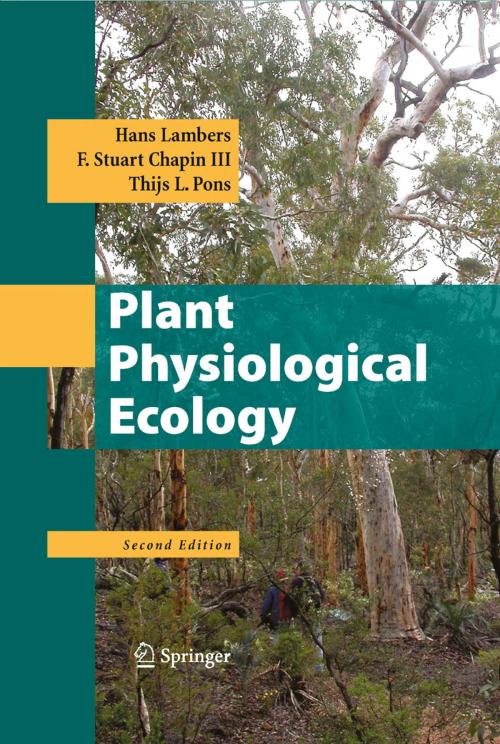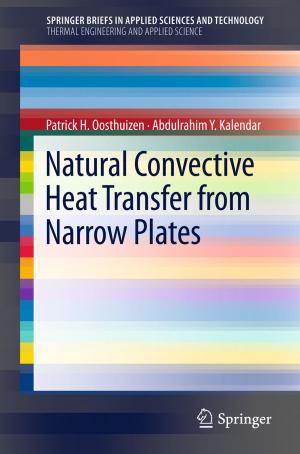Plant Physiological Ecology
Nonfiction, Science & Nature, Science, Biological Sciences, Botany, Ecology| Author: | Hans Lambers, Thijs L. Pons, F Stuart Chapin III | ISBN: | 9780387783413 |
| Publisher: | Springer New York | Publication: | October 8, 2008 |
| Imprint: | Springer | Language: | English |
| Author: | Hans Lambers, Thijs L. Pons, F Stuart Chapin III |
| ISBN: | 9780387783413 |
| Publisher: | Springer New York |
| Publication: | October 8, 2008 |
| Imprint: | Springer |
| Language: | English |
Box 9E. 1 Continued FIGURE 2. The C–S–R triangle model (Grime 1979). The strategies at the three corners are C, competiti- winning species; S, stress-tolerating s- cies; R,ruderalspecies. Particular species can engage in any mixture of these three primary strategies, and the m- ture is described by their position within the triangle. comment briefly on some other dimensions that Grime’s (1977) triangle (Fig. 2) (see also Sects. 6. 1 are not yet so well understood. and 6. 3 of Chapter 7 on growth and allocation) is a two-dimensional scheme. A C—S axis (Com- tition-winning species to Stress-tolerating spe- Leaf Economics Spectrum cies) reflects adaptation to favorable vs. unfavorable sites for plant growth, and an R- Five traits that are coordinated across species are axis (Ruderal species) reflects adaptation to leaf mass per area (LMA), leaf life-span, leaf N disturbance. concentration, and potential photosynthesis and dark respiration on a mass basis. In the five-trait Trait-Dimensions space,79%ofallvariation worldwideliesalonga single main axis (Fig. 33 of Chapter 2A on photo- A recent trend in plant strategy thinking has synthesis; Wright et al. 2004). Species with low been trait-dimensions, that is, spectra of varia- LMA tend to have short leaf life-spans, high leaf tion with respect to measurable traits. Compared nutrient concentrations, and high potential rates of mass-based photosynthesis. These species with category schemes, such as Raunkiaer’s, trait occur at the ‘‘quick-return’’ end of the leaf e- dimensions have the merit of capturing cont- nomics spectrum.
Box 9E. 1 Continued FIGURE 2. The C–S–R triangle model (Grime 1979). The strategies at the three corners are C, competiti- winning species; S, stress-tolerating s- cies; R,ruderalspecies. Particular species can engage in any mixture of these three primary strategies, and the m- ture is described by their position within the triangle. comment briefly on some other dimensions that Grime’s (1977) triangle (Fig. 2) (see also Sects. 6. 1 are not yet so well understood. and 6. 3 of Chapter 7 on growth and allocation) is a two-dimensional scheme. A C—S axis (Com- tition-winning species to Stress-tolerating spe- Leaf Economics Spectrum cies) reflects adaptation to favorable vs. unfavorable sites for plant growth, and an R- Five traits that are coordinated across species are axis (Ruderal species) reflects adaptation to leaf mass per area (LMA), leaf life-span, leaf N disturbance. concentration, and potential photosynthesis and dark respiration on a mass basis. In the five-trait Trait-Dimensions space,79%ofallvariation worldwideliesalonga single main axis (Fig. 33 of Chapter 2A on photo- A recent trend in plant strategy thinking has synthesis; Wright et al. 2004). Species with low been trait-dimensions, that is, spectra of varia- LMA tend to have short leaf life-spans, high leaf tion with respect to measurable traits. Compared nutrient concentrations, and high potential rates of mass-based photosynthesis. These species with category schemes, such as Raunkiaer’s, trait occur at the ‘‘quick-return’’ end of the leaf e- dimensions have the merit of capturing cont- nomics spectrum.















